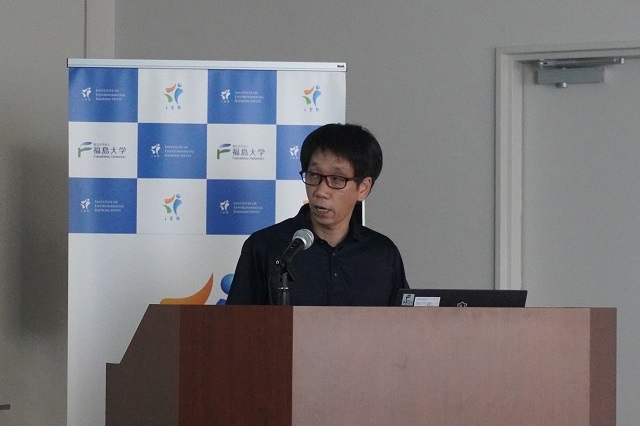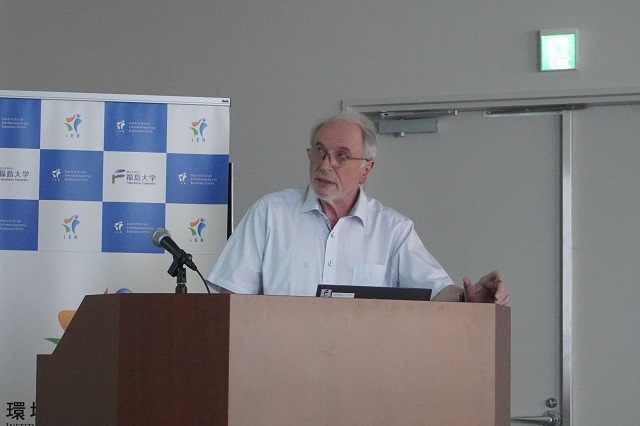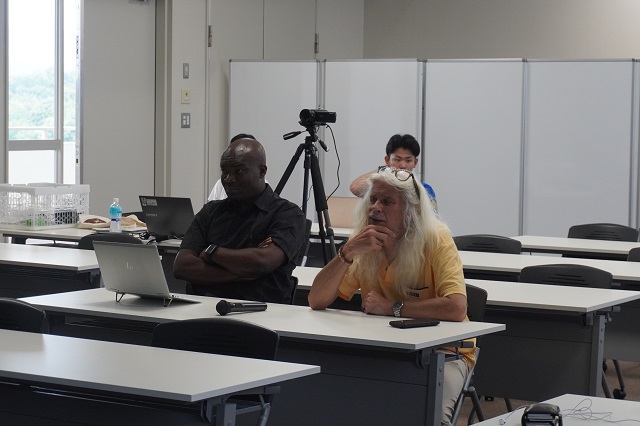On August 25, 2025, 2nd IER Seminar of FY2025 was held. <Associate Professor Wakiyama, Visiting Professor Zheleznyak>
| Date & Time | Mon. August 25, 2025, 13:30-14:30 JST |
| Venue | 6F Conference room, Main Bldg. IER/Online (Zoom) |
| Speakers | Associate Professor WAKIYAMA Yoshifumi Visiting Professor Mark ZHELEZNYAK (Presentation order) |
| Lecture Titles | Riverine 129I dynamics during high-flow events on the Niida River (Wakiyama) Radionuclide Transport Models for Rivers and Coastal Seas(Zheleznyak) |
| Participants | 22 |
Institute of Environmental Radioactivity (IER) regularly holds the IER Seminar in which the faculty members report on their research results, with the aim of facilitating their research activities and promoting communication.
In the 2nd IER Seminar of this fiscal year that was held on August 25, 2025, two presentations were given by Associate Professor WAKIYAMA Yoshifumi and Visiting Professor Mark ZHELEZNYAK to 22 participating researchers and students as follows.
Associate Professor Wakiyama presented findings on variations in the concentration of iodine-129 in river water and its fluxes studied in the Niida River. Water samples collected from under high-flow condition after rainfall events in 2016 and 2017 were analyzed for their 129I concentration and compared with those in previous studies. It was reported that the Niida River exhibits relatively higher 129I concentrations in its river water compared to the Abukuma River, and that 129I was transported mainly in particulate form during high flow events.
Visiting Professor Zheleznyak outlined his work for the 2024-2025 period on radionuclide transport models for rivers and coastal seas. These models will be integrated into decision support systems used in emergency response centers for nuclear accident preparedness and to forecast the consequences of potential accidents at nuclear installations. He highlighted the trend of integrating Chernobyl- and Fukushima-verified radionuclide models with advanced, physically based, distributed hydrological models, such as the open-source WRF-Hydro model (USA) WFLOW model (Deltares, the Netherlands.) Professor Zheleznyak also described the initial collaborative efforts between researchers from Japan (IER & Nichiu Svit LLC), Ukraine (IMMSP), and Poland (NCBJ) to couple the radionuclide transport models with WRF-Hydro and WFLOW.
After each presentation, various questions and comments were raised by IER faculty members.



